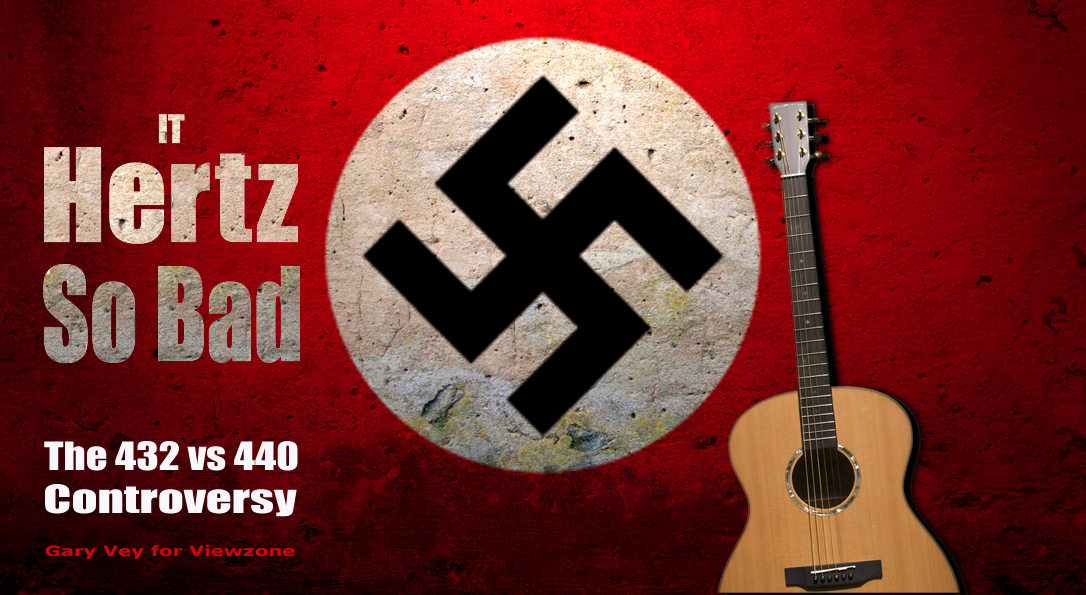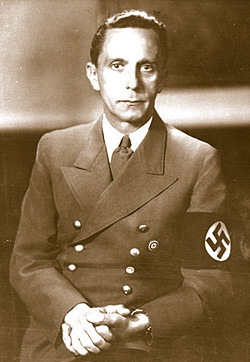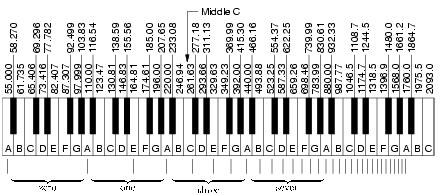

Nazi music? What? Let me explain...
First, if you're reading this then you are quite special. Since the story was posted it has been almost completely avoided by readers. I don't think I can say it has been ignored -- how can you avoid seeing the swastika and the descriptive paragraph?
No, something more is going on... but be glad it is not happening to you. Be glad you are curious and have an open mind... and read on.
After years of writing about woo-woo topics, like aliens and conspiracy theories, I had been content to retire from writing stories on viewzone. But this story caught me off guard. It's perhaps one of the most important I have ever written and you will soon see why.
Recently there has been an epidemic of seemingly senseless violence perpetrated by teens against their fellow classmates or just random victims. This usually culminates in the perpetrator killing himself and leaving everyone wondering why. Interviews with classmates and family typically describe the teen as being "normal" or even "well liked". The only common denominator seems to be that, like all teens, they were obsessed with listening to music.
Could music really be responsible for this violent behavior? Well, before you dismiss this idea as ridiculous, please continue reading. Then make up your own mind.
The culprit here is not just rap music or heavy metal. It's not just the gangster lyrics or the sexual overtones of music videos -- it's ALL music! And the negative effects are not only obvious in a specific age group or culture -- it's pandemic. Let me explain.
From individual acts of violence to national conflicts and war, there is a growing belief among the enlightened that almost all of our music has been crafted to create specific mental and psychological conditions that predispose us to be self-centered, narcissistic, materialistic and aggressive.
How can this be?
I know, this sounds like crazy talk. At first I also dismissed this. Then the plot became more realistic when I heard the scientific and historical explanation. I know you are anxious to hear this so I will give you the story first, then discuss the details.
In this article you will learn some amazing things about music, its origins and history and how something radical happened in 1939 (the alleged Nazi connection) that forever changed all music and is right now controlling how you and I live, how we feel and what we do... read on.
I will assume that, like me, many of you reading this are not musicians. I've tried to play guitar and I've tinkered on the keyboards of a piano, but only my own ears should be made to suffer with the results. I know the names of the notes and I have tuned the strings of a guitar. So with that common ground, let me now take you into what is hands-down the most pervasive conspiracy theory I've ever written about on viewzone. I can guarantee you will never listen to music in a supermarket, on your iPod or at a concert in the same way again. Are you ready?
The 440 Hertz Story
When two or more musicians get together, it is important for their instruments to be in tune. A specific note on one instrument should be the same frequency as the same note on another. Rather than argue about who is correct and who is sounding "off" pitch, some standard agreement about tuning is usually adhered to beforehand. Today, most musicians around the world tune their instruments in such a way that the "A" note -- the one above middle "C" -- is tuned specifically to a frequency of 440 cycles per second (Hertz).
In tuning a guitar, for example, the "A" string is usually tuned to 440 Hz first, then the other strings are tuned accordingly. Likewise, on a piano, the "A" note is tuned first, then the other notes are adjusted either higher or lower
This frequency of 440 Hz is called the standard "Concert Pitch" and has been the practice everywhere since about 1939. It was officially adopted by the global ISO Standard in about 1956. Just about all the music you hear is adjusted to this specific pitch. But this was not always the case.
The story told on the web claims that most ancient instruments in human history were tuned to a different pitch. The one most preferred was 432 Hz. It is claimed that even the oldest flutes, dating back to the Neanderthals (45,000 BCE) were tuned to 432, as were the lyres in ancient Greece and the wind instruments discovered in Egyptian tombs.
An interesting story claims that the lyres of the temples of Greece were an integral part of the ceremonies worshiping Isis and other so-called mystery schools. Cult members were aroused to states of ecstasy by the sounds of this 432 Hz tuned music which, in the case of the Eleusinian Mysteries, made them filled with compassion and altruism. For this reason, according to the story, the war-like state of Sparta had all the lyres re-tuned to a higher frequency, thus nulling the anti-war sentiments.
Obviously, the ancient people did not have tuning forks or digital meters and so it is presumed that this frequency of 432 is intuitive, meaning that it somehow sounded right to the human ear. This kind of intuition is supported by the surprise that even the most ancient flutes all have what is called a heptatonic scale of eight notes ("Do, Re, Me, Fa...") such that, if you picked one up back then you could conceivably play Yankee Doodle on it. In fact, in Werner Herzog's film documentary, Cave Of Forgotten Dreams, archaeologist Wulf Hein plays The Star Spangles Banner on a Paleolithic flute made from the radius bone of a vulture.

Note: The author used iSpectrum running on Mac OS to assess the frequency of this recording and found it to be spot on 432 Hz tuned!
Musical instruments such as the 45,000 year old flute pictured above must have had an even more ancient origin where the preferred tone, musical scale and production were perfected. How far back in time the art of music in human history goes is anyone's guess.
Most historians believe music started as a way of mimicking birds or the sounds a mother uses to sooth a crying baby. But there is evidence that music was also part of the spiritual practices used to create an altered state of consciousness for shaman rituals and tribal initiations. Today we have little doubt that music can change our emotions and mental states and, after all, that's why we love it.
Rockefeller and The New World Order
When music became a performance art, there was a tendency for orchestras and performing musicians to tune their instruments up. This created a "brighter" sound that was better suited for the acoustics and environment of their stage. Some had the A tuned as high as 460 Hz. Opera singers complained that they could not sing in these higher ranges and that they were suffering from vocal stress.
Giuseppe Verdi was an Italian Romantic composer primarily known for his operas. He is considered, together with Richard Wagner, the preeminent opera composer of the nineteenth century. Naturally concerned for the well-being of his opera singers, Verdi proposed that the French government adopt a standard where C=256 Hz. This is the same scale where A=432 Hz. He claimed that it was the natural range for singing. But his efforts failed. Nevertheless the term "Verdi tuning" is often used to describe the 432 Hz standard for "A".

The real music conspiracy story begins in 1910 when a man named John Calhoun Deagan [right], an alleged member of the US Naval Intelligence which was funded by the Rothschilds through their agents in the Rockefeller family, joined the American Federation of Musicians and convinced the group to endorse a standard of 440 Hz tuning for all orchestras and concert performing musicians. He was successful but this standard only applied to public performances in America.
Moving forward a decade, JD Rockefeller and JP Morgan created the Federal Reserve Bank as Illuminati agents and established the Rockefeller Foundation (1913). They began implementing their plans for what is now commonly known as the "New World Order". Their first endeavor was the promotion (and funding) of the idea that society would be greatly improved with the elimination of the "inferior people" (i.e. those with feeble minds, alcoholics, criminals, those with genetic diseases) through imposed sterilization and euthanasia.
Eugenics (the selective breeding of humans) was a popular idea among the elite and much has been written about this in the darker chapters of American history. For example, Kellogg's corn flakes (for which they are now famous) was initially developed as an inexpensive "feed" for inferior humans who were to be held in what amounted to concentration-style labor camps where they would be sterilized and allowed to die off while earning their keep. But I digress.
The Rockefeller's had only limited success with the introduction of so-called "racial hygiene laws" (one law actually passed in the state of Virginia). The American public was apprehensive about this idea as many impoverished people and certain racial types were included in the "inferior" category and slated for elimination. What they needed was a vehicle to convey their grand ideas to the common man.
At about this same time, Thomas Edison had invented the phonograph and cinemas were beginning to show films made with soundtracks, both live and recorded. The potential to utilize sound as a propaganda tool was quickly realized and General Electric (Edison's new company) received large grants from the Rockefellers to develop this. They also funded acoustic research through the U.S. Naval and National Defense Research Council geared at finding ways to alter the emotions through music. They were especially interested in the ability to create mass hysteria and interviewed families who had been driven to a frenzy by Orson Wells' broadcast of War of The Worlds. They realized the potential that audio and music could have on the human psyche and incorporated these ideas in their plan for global mind control. [source]
Because the phonograph records and "talking" movies were produced in America, these new technologies were forced to comply with the American Federation of Music's 440 Hz tuning standard. Soon a slew of propaganda films were shown in Edison's theaters before and after the main features and surveys were conducted to determine the emotional effectiveness of the musical soundtracks.
At the beginning of the 1930s, the potential of 440 Hz to combat altruism and stimulate nationalism, narcissism and aggression was fueled by the new science of Psychology. Freud's psychoanalysis in Europe was mainly for the elite but his theories of mass hysteria found their way to America through his nephew, Edward Bernays, who successfully used Freud's theories and mind control techniques in advertising and politics. He was the first to note that only about 8-10% of a population needed to be convinced of a new idea for it to eventually become unanimously accepted. This has been called the "10% Solution".
The Nazi Connection
The Rockefeller Foundation was anxious to apply these new mind control techniques on a global scale. Together with the Rothschild's and global bankers they approached the German minister of Propaganda, Joseph Goebbels, who was already utilizing many of Bernays' advertising ideas to promote the Nazi Party.

Above: Bernays ad campaign for CocaCola and
below is Goebbels campaign for the Nazi Party.

 With their support, and with the reminder that the British were heavily in debt to their banks, the Illuminati sponsored Goebbels to promote the adoption of the 440 Hz standard by the British Standards Institute which would apply to all musicians playing in Europe. This measure reluctantly passed in 1939 despite being three months after Hitler invaded Poland. Technically, Germany had started WWII and was an axis of Britain, but this had little impact on their ultimate decision.
With their support, and with the reminder that the British were heavily in debt to their banks, the Illuminati sponsored Goebbels to promote the adoption of the 440 Hz standard by the British Standards Institute which would apply to all musicians playing in Europe. This measure reluctantly passed in 1939 despite being three months after Hitler invaded Poland. Technically, Germany had started WWII and was an axis of Britain, but this had little impact on their ultimate decision.
During and after WWII, 440 Hz became widely used and has become the modern standard tuning for all music. This is where we stand today. But what was the significance of 440 Hz? A more interesting question is why was 432 Hz, the intuitive tuning frequency used since the inception of music in humanity, so undesirable to the Rockefellers, Rothschilds (Illuminati) and Nazis? That's next.


Glossary of Terms
Octave: The interval with the higher tone twice the frequency of the lower. For example, A=440Hzz, A'=880Hz. It is a perfect consonance creating no interference waves. It is also an interval of eight white notes on the piano.
Scale: The division of the octave into some logical or useful series of pitches. The term "scale" indicates ascending by steps of some kind.
Half-step: In the piano it is the next adjacent tone, 1/12th of an octave.
Whole-step: On the piano keyboard it is the distance between tones two half-steps apart.
Diatonic: The natural scale of five whole and two half-steps arranged like the white keys on the piano keyboard. Each degree of the scale has its own letter name (A,B,C,D,E,F,G).
Heptatonic: Hepta (Greek: seven) seven tone division of an octave. One example of a heptatonic scale the "do-re-mi" scale.
Third: An interval of three steps; an imperfect consonance which our ears accept as pleasing.
Fifth: An interval of five steps. Like the octave the fifth creates no interference waves. In equal temperment tuning out fifths are slightly smaller than in perfect tuning, not enough to bother listeners, but enough to allow all of the half-steps to be of equal size and to allow for key changing within a piece.
Tritone: The dicision of the octave exactly in half. Three (tri-) whole tones. In medieval times this interval was called the devil in music. It was difficult to sing, very unstable, and demanded immediate resolution to a consonant interval.
Tuning: Instruments (piano, harps, etc.) are tuned according to the laws of physics (acoustics). Pythagorean tuning has all the perfect intervals (octaves, 4ths, 5ths) in perfect tune. Equal temperment tuning, which we use in Western civilization today, has modified 4ths and 5ths, but perfect octaves. This tuning is modified to allow for the use of various keys composers began to use from the time of Bach onward. Equal temperment tuning allows for equal sized half-steps and for key changes as remote as from C major to F# major with perfect ease. In the Middle East and the Orient there are many other systems, some of which use 1/4 tones and other exotic relationships.
Timbre The color of the sound such that a saxophone or an organ, playing the same note, could be distinguished by their uniqueness.
Rhythm The interval between tones or percussion usually measured in equal segments of time (such as a whole, half, quarter - note)
Pitch Usually pitch refers to the tone, measured in cycles per second or hertz (Hz).
Reprinted courtesy of Biblical Archaeology Review, for which the glossart was prepared in 1980 by Dr. Gordon H. Smith, Professor of Music, American University, Washington, D.C.)
